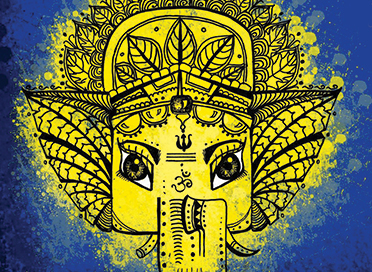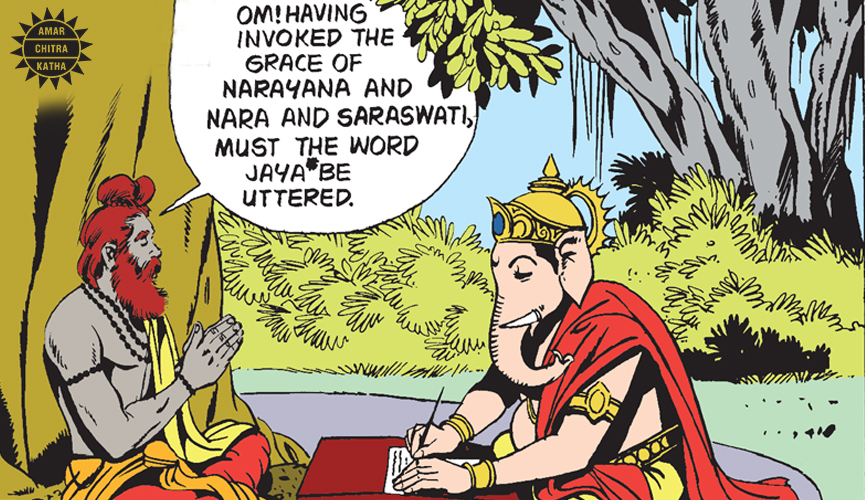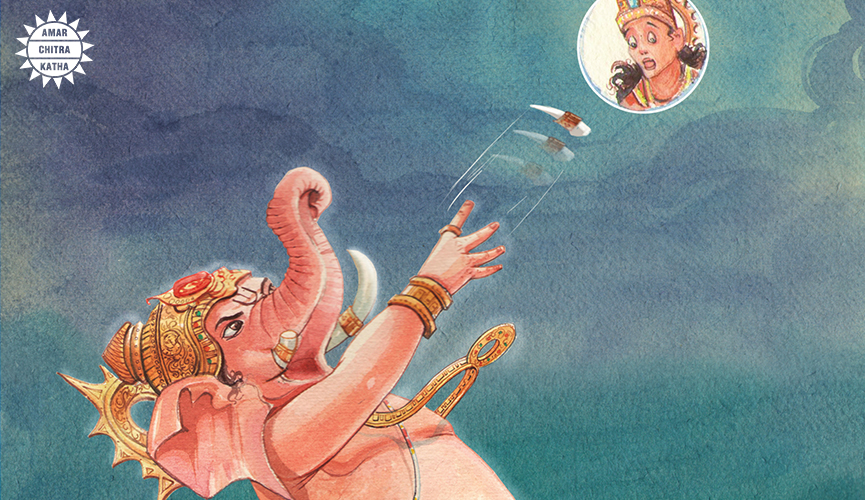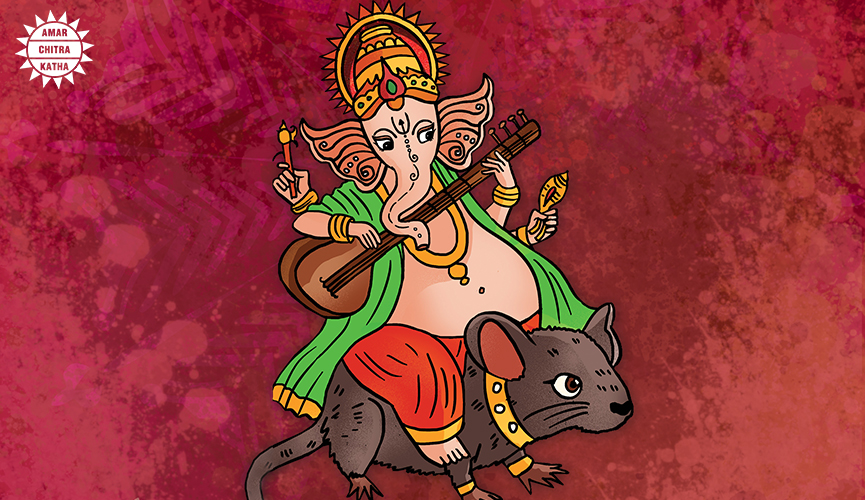Legends Behind Ganesha’s Tusk
- September 13, 2021


Legends Behind Ganesha’s Tusk
- September 13, 2021
By Kayva Gokhale
Ganesha, one of the most beloved gods in Hindu mythology, is also known as ‘Ekadanta’, the one with one tooth. Ganesha’s broken tusk is a very significant part of his iconography and there are multiple stories behind how he broke his tusk, all of which are as enthralling as they are varied. Here are some of the most popular legends behind Ganesha’s tusk, their sources ranging from the Mahabharata to the Brahmanda Purana.

Perhaps the most well-known story about Ganesha’s tusk comes from the Mahabharata, with Ganesha acting as Vyasa’s scribe. It is believed that when Vyasa was composing the epic Mahabharata, he required a scribe who could write down the poem as fast as he could dictate it. Finding nobody that was capable of this task, Vyasa approached Ganesha and requested him to act as his scribe. Ganesha agreed, but on one condition: he demanded that Vyasa dictate the epic without any pauses. Vyasa, knowing that it would be hard to keep up with Ganesha’s speed, made a counter-condition that Ganesha must write only once he understood every word of what he was being told. Having agreed to Vyasa’s terms, Ganesha sat down to write the epic and as a marker of goodwill, broke off his tusk to use as a pen. Thus, the Mahabharata was composed with Vyasa dictating the long and complicated verses to Ganesha who had to slow down his writing speed to understand the words he was being told. In another version of this story, it is said that Ganesha started writing with an ordinary quill, which broke off in the middle of the dictation. Not wanting to stop to fetch a new quill, Ganesha simply broke off his tusk and continued writing with that instead. The tusk of Ganesha, hence, is significant in bringing to life one of the two most important epics to come out of India.
To receive more such stories in your Inbox & WhatsApp, Please share your Email and Mobile number.

According to one story, Ganesha’s broken tusk is the result of his conflict with the moon. According to the story, Ganesha was once invited to the abode of the moon for a feast. Ganesha, with his tremendous appetite, devoured the spread, especially indulging in his favourite modaks. After the meal was over, Ganesha left the moon’s palace on his vahaana, Mooshak. However, on the way, a snake appeared in their path startling Mooshak, who in his fright caused Ganesha to fall. As Ganesha fell down, his stomach burst open and all the modaks he had consumed tumbled out onto the ground. Ganesha then quickly collected the modaks and put them back into his stomach and tied the snake around his torso. Watching this from the sky, the moon burst into laughter. Angry at the moon’s laughter, Ganesha ripped off one of his tusks and flung it at the moon. He also cursed the moon to become invisible, to teach him a lesson in humility. As soon as the moon disappeared, the earth was plunged into total darkness. Worried about the moon’s disappearance, all the gods appealed to Ganesha to amend his curse. Ganesha softened his punishment and declared that the moon would wax and wane every fortnight, completely disappearing once a month. And thus, the moon waxes and wanes constantly, with its blemished surface still bearing the marks of Ganesha’s tusk.
In another popular legend, Ganesh’s tusk was broken off by Parashurama. According to this legend, Parashurama, the great devotee of Shiva, once visited Mount Kailash to seek Shiva’s blessing. However, Shiva was meditating at the time and had instructed Ganesha to turn away anyone that came to see him. Upon his father’s orders, Ganesha forbade Parashurama from entering Kailash, thus angering the sage greatly. In his rage, Parashurama threw his axe at Ganesha. Although Ganesha could have easily stopped the axe from harming him, he noticed that the axe was the same divine weapon that his father had gifted to Parashurama. Therefore, out of respect to Shiva and his divine axe, Ganesha refused to defend himself against the attack. The axe hit Ganesha’s tusk and broke it, thus making Ganesha ‘Ekadanta’.

The story of Gajamukha’s defeat at the hands of Ganesha is quite well known. It is said that the demon Gajamukha, attained great power through penance and then used his strength to harass the gods and sages. Upon finding themselves unable to defeat Gajamukha, the gods turned to Ganesha, who then vanquished Gajamukha. In many versions of this story, Ganesha broke off his own tusk to use as a weapon against Gajamukha. It is believed that Ganesha turned him into a mouse who became his vahaana Mooshak!
Read the stories of Ganesha in our special release Ekadanta. Now available on the ACK Comics App.
To receive more such stories in your Inbox & WhatsApp, Please share your Email and Mobile number.

Comic of The Month
The Naval Journey of India Book I
This book is the first of a three-book series that takes a deep and detailed look at India's Naval History and a deep insight into the lives of our men and women in white. But any series on the Indian Navy has to start at the very beginning - exploring India's celebrated maritime history. Join our little hero, Bharat, and his grandfather, Commodore Sagar, as they sail into the deep blue waters of time. Book I of The Naval Journey of India takes a sweeping look at India's maritime endeavours, how the seas impacted us over millennia and how the oceans made us who we are.